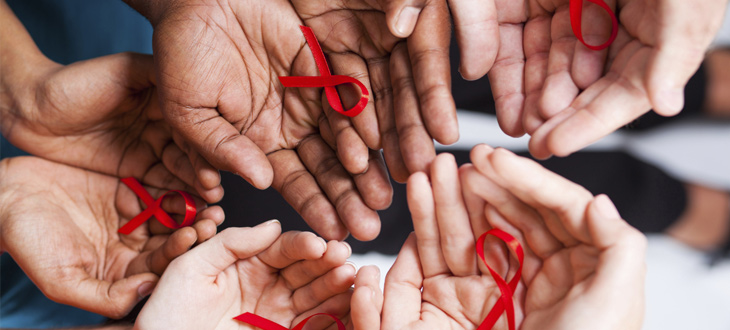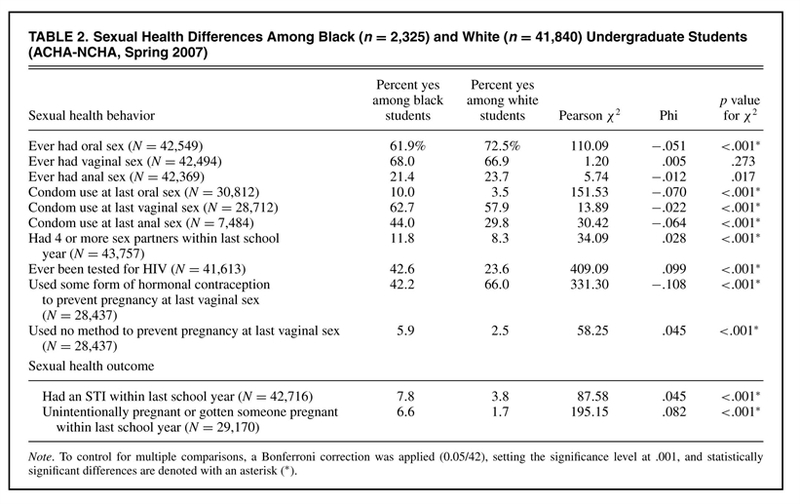The State of the Union: Sexual Health Disparities in a National Sample of US College Students
This study explores the sexual health disparities between black and white college students in the U.S. During the length of the study, researchers gathered information on sexual partners, contraceptive use, and reports of sexually transmitted testing and transmission. Researches found that among the sampled students, rates of transmission were 7.8 among black students, 4 percent higher than transmission rates among white students. However, it was reported that white students engage in more sexual activity. However, black students reported having a significantly higher number of sexual partners than white students. In conclusion, whites were more likely to practice a range of sexual behaviors and were less likely to use a condom, but black students had higher numbers of sexual partners and were more likely to contract a sexually transmitted disease. Sociologists speculate that the increased exposure to STI's and STD's among blacks is due to the sexual networks in the black community and the preference to choose other blacks as sexual partners thus keeping the diseases transmitted among the community. College health professionals are looking to better educate and prepare minority groups for sexually transmitted diseases as well as provide them prevention methods. Health centers are also looking to include more minority representatives in order to better relate and aid minority students in an attempt to reduce the number of sexual partners and transmission rates among black students.
Buhi, Eric R., et al. “The State of the Union: Sexual Health Disparities in a National Sample of US College Students.” Journal of American College Health, vol. 58, no. 4, Jan. 2010, pp. 337–346. EBSCOhost, proxy-remote.galib.uga.edu/login?url=http://search.ebscohost.com/login.aspx?direct=true&db=ehh&AN=48119161&site=eds-live.

